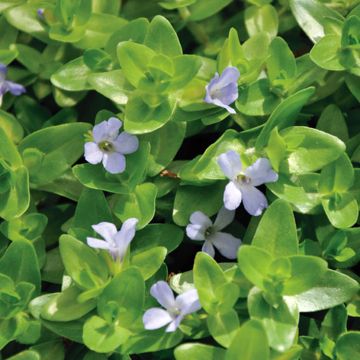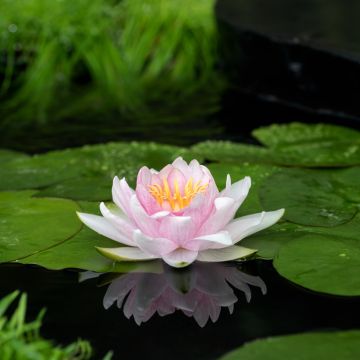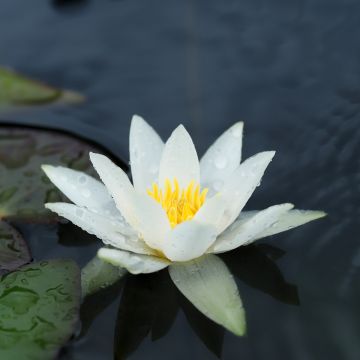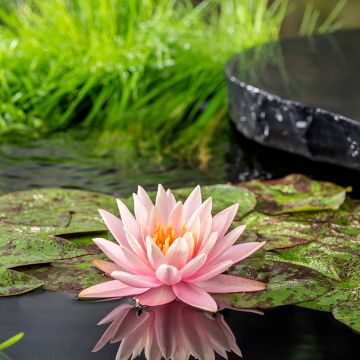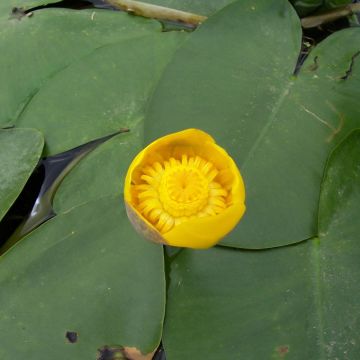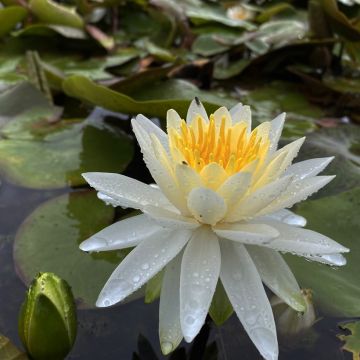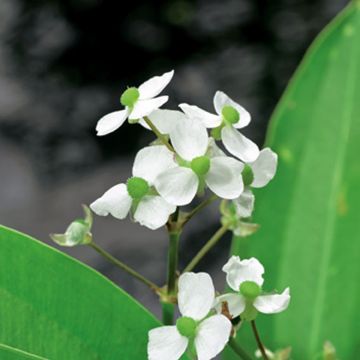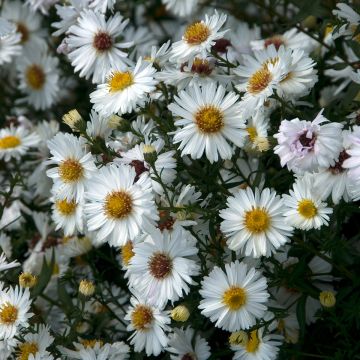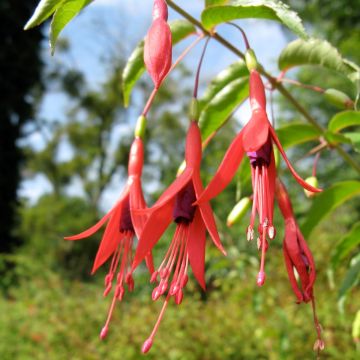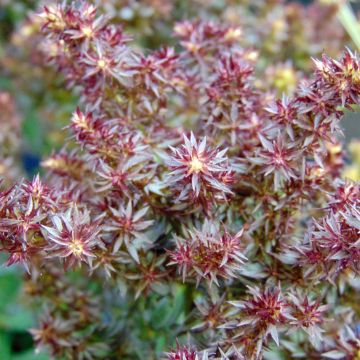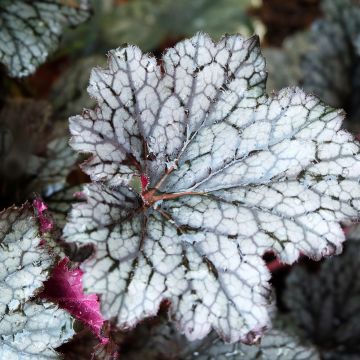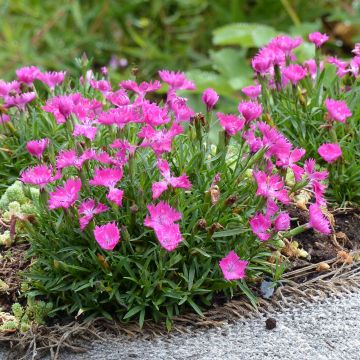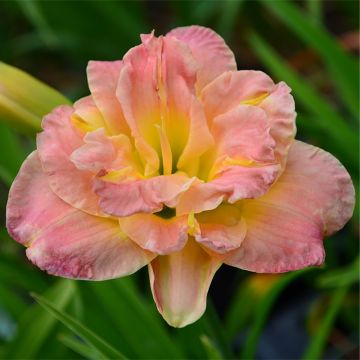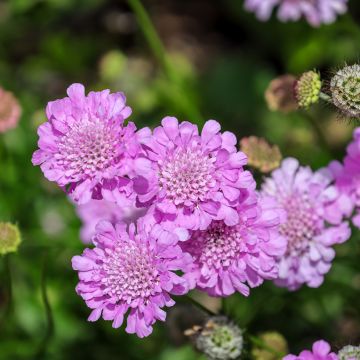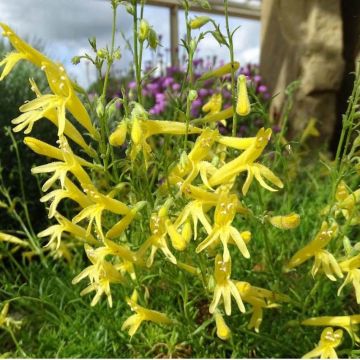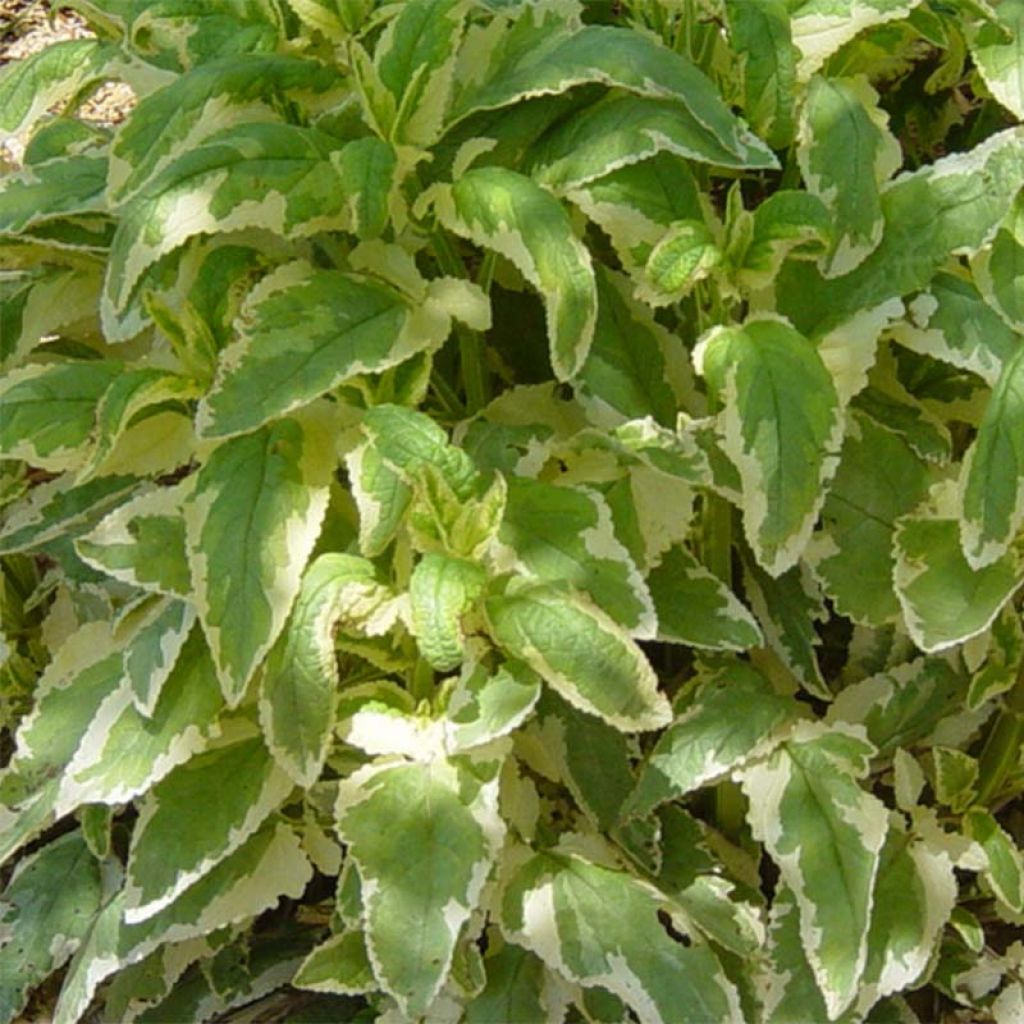

Scrophularia auriculata Variegata
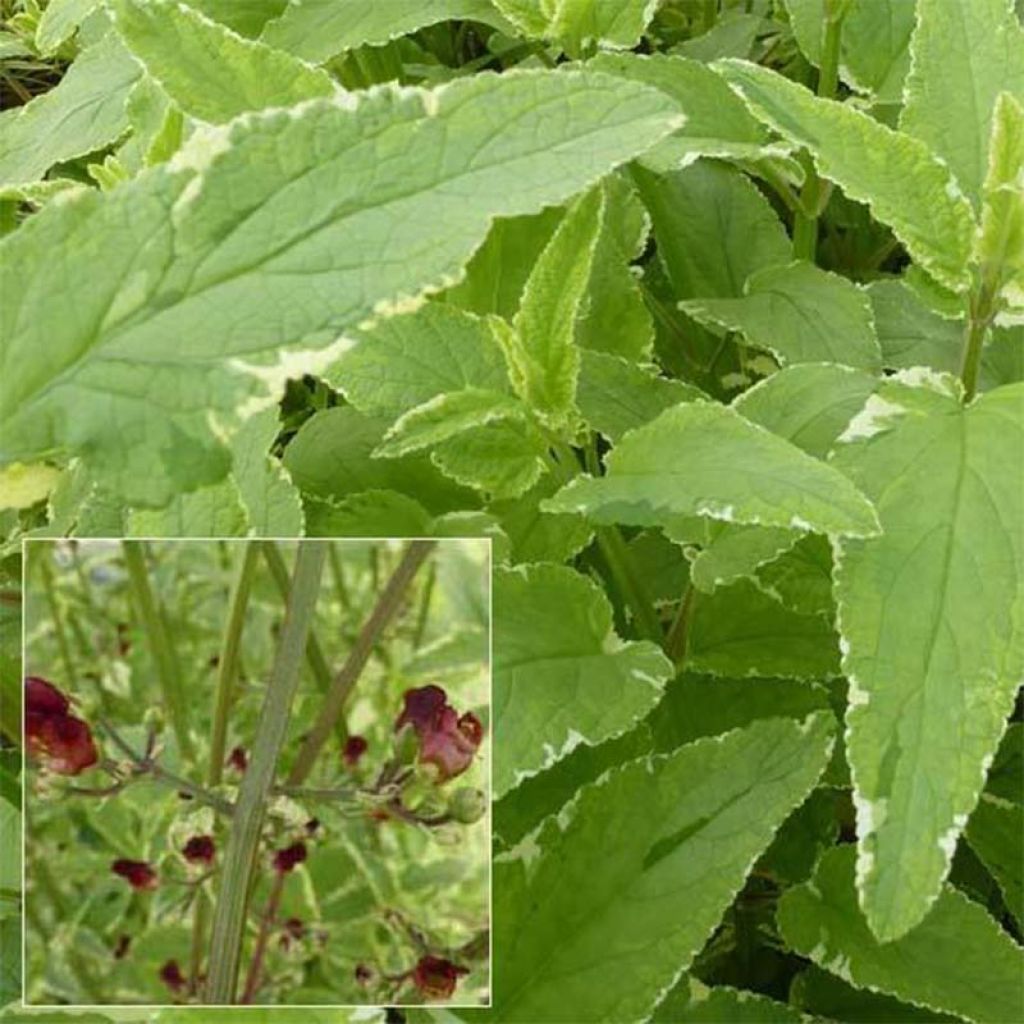

Scrophularia auriculata Variegata
Scrophularia auriculata Variegata
Scrophularia auriculata Variegata
Water Figwort
Very nice growth. Mine reached a height of 1m (3ft) quickly. Its original flowering with a red helmet is staggered and therefore lasts a long time. GREAT! Wasps come to gather nectar from the flowers! Yes, adult wasps consume sugar while their larvae consume proteins for their growth, prey hunted by adults, aphids, spiders, locusts... Perfect for the biodiversity I was looking for :)
Julien, 27/05/2020
This item cannot be shipped to the selected country
Delivery charge from €5.90
More information
Schedule delivery date,
and select date in basket
This plant carries a 12 months recovery warranty
More information
We guarantee the quality of our plants for a full growing cycle, and will replace at our expense any plant that fails to recover under normal climatic and planting conditions.
From €5.90 for pickup delivery and €6.90 for home delivery
Express home delivery from €8.90.
Does this plant fit my garden?
Set up your Plantfit profile →
Description
Scrophularia auriculata 'Variegata', as its name suggests, is a beautiful variety of scrophularia with variegated foliage, featuring oval, wavy, and toothed leaves in a dark green-grey colour heavily maculated with cream-white. Between June and August, it bears clusters of tiny white-greenish flowers with a reddish-brown violet upper lip. This sturdy perennial plant is ideal for adding a touch of refined elegance to wet areas of the garden, in full sun or partial shade. A very hardy and low-maintenance plant, mostly deciduous, perfect for quickly filling the edges of a pond or stream.
Scrophularia auriculata belongs to the Scrophulariaceae family, just like snapdragons, mulleins, and foxgloves. This herbaceous perennial plant is native to western Europe. The 'Variegata' form distinguishes itself with its unique foliage, variegated with cream-white. The plant forms a bushy clump reaching 40 to 80cm (16 to 32in) in height, sometimes more, depending on growing conditions. It will spread about 60cm (24in). Sturdy, hollow, square-sectioned stems emerge from the base. They bear characteristic foliage, which is sometimes evergreen in mild climates. The leaves are oval, 5 to 25cm (2 to 10in) long, rough, with a swollen appearance and rounded toothed edges. They are a dark green-grey colour, widely and irregularly variegated with cream-white. The summer flowering does not have great ornamental interest and can be removed to promote the appearance of new foliage. The inflorescences are terminal panicles of tiny round, bilabiate flowers, 1cm (0.4in) long. They are yellowish-green, each with a reddish upper lip.
Scrophularias have the advantage of adapting to most wet situations, especially in clay and/or limestone soils. These plants combine several qualities. Their naturalness, the beauty of their (sometimes evergreen) foliage, and their hardiness make them suitable for many situations, whether for their aesthetic or ecological interest. Plant them in a light and humid understory, or along a stream or a large body of water. Scrophularia auriculata 'Variegata' is particularly remarkable for its elegant foliage. Paired with burgundy, violet, golden, or bronze foliage (actaea, rodgersia), it will create a contrasting picture in partial shade. It can also be combined with dark green foliage (angelica), silver (Artemisia lactiflora), or chartreuse (Alchemilla mollis), in a harmonious colour scheme, in full sun.
Report an error about the product description
Scrophularia auriculata Variegata in pictures
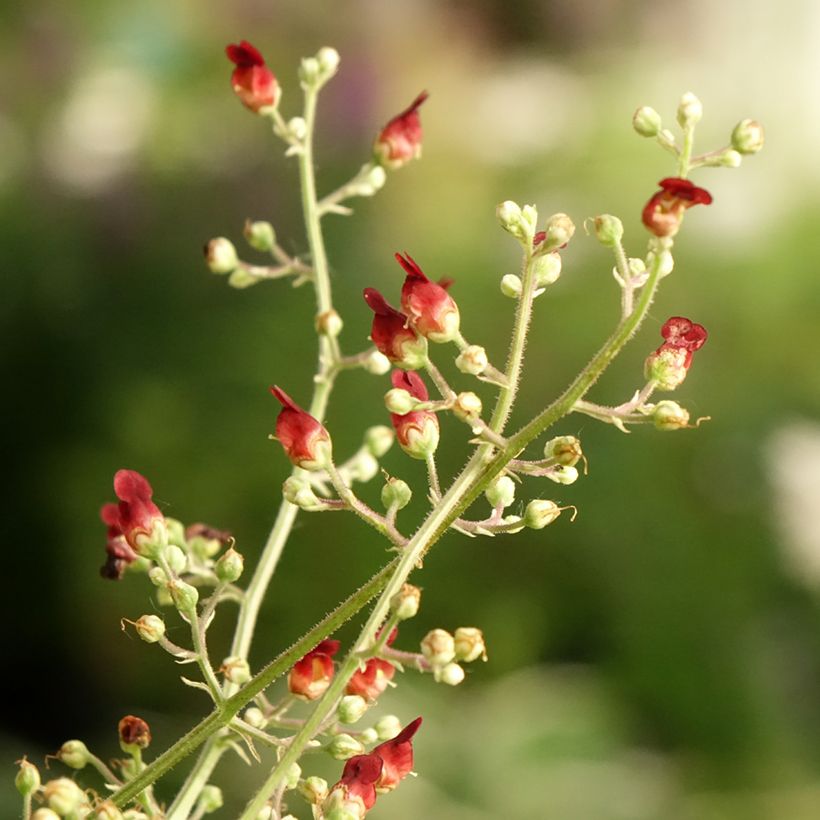

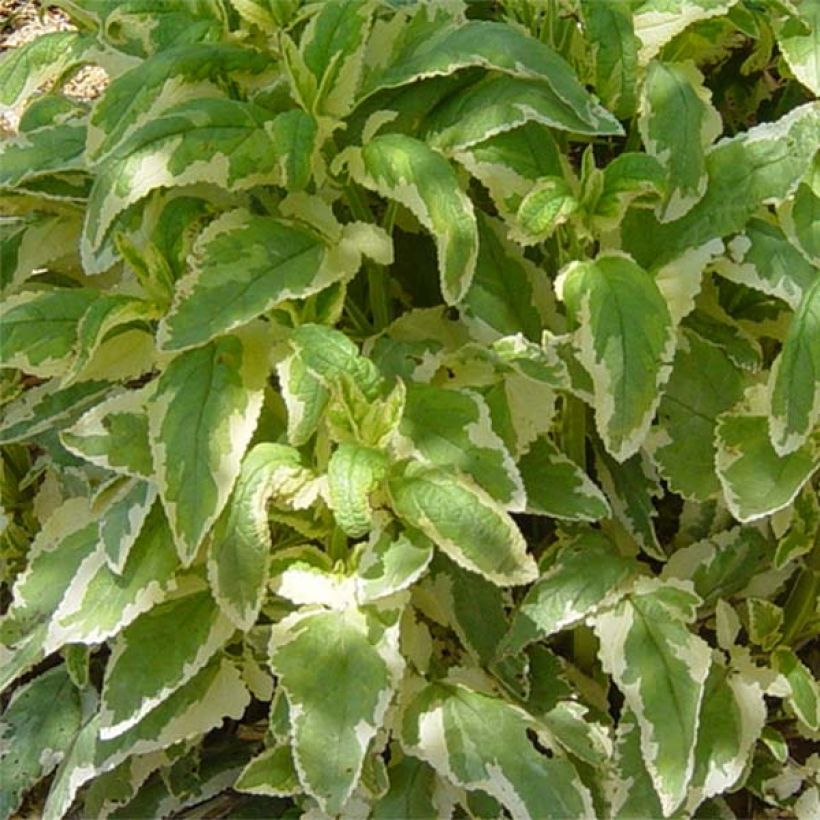

Flowering
Foliage
Plant habit
Botanical data
Scrophularia
auriculata
Variegata
Scrophulariaceae
Water Figwort
Western Europe
Other Aquatic perennials
Planting and care
Scrophularia auriculata 'Variegata' is a plant of sun or partial shade. When exposed to shade, it will tend to grow abnormally to seek light and become leggy, while its foliage will be less colourful. It roots in banks and moist, clayey, fertile, preferably limestone soils. This plant needs soil rich in organic matter to be able to develop properly. It is advisable to cut the panicles as soon as they appear to prevent the plant from self-seeding in marshy areas or in pots of other plants with weaker growth. This operation also promotes foliage renewal in summer. Clean the clump at the end of winter.
Planting period
Intended location
Care
-
, onOrder confirmed
Reply from on Promesse de fleurs
Summer flowering perennials
Haven't found what you were looking for?
Hardiness is the lowest winter temperature a plant can endure without suffering serious damage or even dying. However, hardiness is affected by location (a sheltered area, such as a patio), protection (winter cover) and soil type (hardiness is improved by well-drained soil).

Photo Sharing Terms & Conditions
In order to encourage gardeners to interact and share their experiences, Promesse de fleurs offers various media enabling content to be uploaded onto its Site - in particular via the ‘Photo sharing’ module.
The User agrees to refrain from:
- Posting any content that is illegal, prejudicial, insulting, racist, inciteful to hatred, revisionist, contrary to public decency, that infringes on privacy or on the privacy rights of third parties, in particular the publicity rights of persons and goods, intellectual property rights, or the right to privacy.
- Submitting content on behalf of a third party;
- Impersonate the identity of a third party and/or publish any personal information about a third party;
In general, the User undertakes to refrain from any unethical behaviour.
All Content (in particular text, comments, files, images, photos, videos, creative works, etc.), which may be subject to property or intellectual property rights, image or other private rights, shall remain the property of the User, subject to the limited rights granted by the terms of the licence granted by Promesse de fleurs as stated below. Users are at liberty to publish or not to publish such Content on the Site, notably via the ‘Photo Sharing’ facility, and accept that this Content shall be made public and freely accessible, notably on the Internet.
Users further acknowledge, undertake to have ,and guarantee that they hold all necessary rights and permissions to publish such material on the Site, in particular with regard to the legislation in force pertaining to any privacy, property, intellectual property, image, or contractual rights, or rights of any other nature. By publishing such Content on the Site, Users acknowledge accepting full liability as publishers of the Content within the meaning of the law, and grant Promesse de fleurs, free of charge, an inclusive, worldwide licence for the said Content for the entire duration of its publication, including all reproduction, representation, up/downloading, displaying, performing, transmission, and storage rights.
Users also grant permission for their name to be linked to the Content and accept that this link may not always be made available.
By engaging in posting material, Users consent to their Content becoming automatically accessible on the Internet, in particular on other sites and/or blogs and/or web pages of the Promesse de fleurs site, including in particular social pages and the Promesse de fleurs catalogue.
Users may secure the removal of entrusted content free of charge by issuing a simple request via our contact form.
The flowering period indicated on our website applies to countries and regions located in USDA zone 8 (France, the United Kingdom, Ireland, the Netherlands, etc.)
It will vary according to where you live:
- In zones 9 to 10 (Italy, Spain, Greece, etc.), flowering will occur about 2 to 4 weeks earlier.
- In zones 6 to 7 (Germany, Poland, Slovenia, and lower mountainous regions), flowering will be delayed by 2 to 3 weeks.
- In zone 5 (Central Europe, Scandinavia), blooming will be delayed by 3 to 5 weeks.
In temperate climates, pruning of spring-flowering shrubs (forsythia, spireas, etc.) should be done just after flowering.
Pruning of summer-flowering shrubs (Indian Lilac, Perovskia, etc.) can be done in winter or spring.
In cold regions as well as with frost-sensitive plants, avoid pruning too early when severe frosts may still occur.
The planting period indicated on our website applies to countries and regions located in USDA zone 8 (France, United Kingdom, Ireland, Netherlands).
It will vary according to where you live:
- In Mediterranean zones (Marseille, Madrid, Milan, etc.), autumn and winter are the best planting periods.
- In continental zones (Strasbourg, Munich, Vienna, etc.), delay planting by 2 to 3 weeks in spring and bring it forward by 2 to 4 weeks in autumn.
- In mountainous regions (the Alps, Pyrenees, Carpathians, etc.), it is best to plant in late spring (May-June) or late summer (August-September).
The harvesting period indicated on our website applies to countries and regions in USDA zone 8 (France, England, Ireland, the Netherlands).
In colder areas (Scandinavia, Poland, Austria...) fruit and vegetable harvests are likely to be delayed by 3-4 weeks.
In warmer areas (Italy, Spain, Greece, etc.), harvesting will probably take place earlier, depending on weather conditions.
The sowing periods indicated on our website apply to countries and regions within USDA Zone 8 (France, UK, Ireland, Netherlands).
In colder areas (Scandinavia, Poland, Austria...), delay any outdoor sowing by 3-4 weeks, or sow under glass.
In warmer climes (Italy, Spain, Greece, etc.), bring outdoor sowing forward by a few weeks.

































